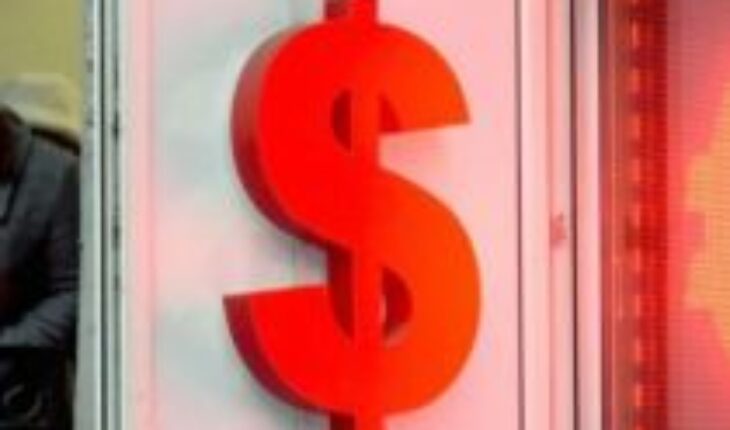The European currency sank to its lowest level in 20 years, reaching historic parity with the dollar.
The two currencies reached the same value on Tuesday, marking a symbolic 1:1, which represents a 15% decline in the euro in the last year. On Wednesday, even the European currency traded below the dollar.
This comes as fear in the markets of a economic recession in Europe, in a context of high inflation and growing uncertainty about the continuity in the supply of Russian gas.
Gone are the years when the euro was so strong (1.6 times the dollar during the 2008 global financial crisis) that many Europeans went on vacation to the United States because of low prices for hotels and food, returning home with suitcases full of electronics and clothes.
But now the situation is completely different, with Europe suffering the economic consequences of the war in Ukraine and the European Central Bank’s decision to maintain interest rates.
Why is the euro sinking?
The depreciation of the euro occurs in the middle of a energy crisis in Europe provoked by the Russian invasion of Ukraine.
There are concerns about the possibility that this crisis will cause a recession of unsuspected consequences, a shadow that intensified on Monday in the face of the reduction in the supply of Russian gas and the concern that inflation will continue to rise.
Russian energy giant Gazprom has begun 10 days of maintenance on its Nord Stream 1 pipeline, with Germany and other European countries anxiously watching whether the gas will return after this operation.
Russia could seize the opportunity to close the valves.
“There is a lot of fear about what could happen on the energy level with the war. We’ll see if we continue to receive gas from Russia,” says Juan Carlos Martínez, professor of economics at IE University.
To that conflict is added the blow that the currency has received because interest rates are rising much faster in the United States and that attracts capital to the largest economy in the world.
“The most important cause of the fall of the euro is the different speed in monetary policy of the Federal Reserve of the United States and the European Central Bank,” Martinez argues in a dialogue with BBC Mundo.
For investors, yields on U.S. Treasuries are higher than those on European debt, making them prefer the dollar over the euro.
From that perspective the European Central Bank is in a difficult position, trying to curb inflation and, at the same time, cushioning a slowing economy.
“The euro zone is not yet starting to raise interest rates. It will predictably do so at its meeting at the end of July, but it will do so in a slower way,” adds Martínez.
What are the consequences?
With inflation in the euro zone at its highest level since records began (8.6%), the euro’s depreciation Increases the cost of living by making imports more expensive.
At other times in history, a weaker currency is not necessarily bad news because governments use it as a way to stimulate economic growth, as exports become more competitive.
Now, however, this is not the case.
“Every time the dollar continues to appreciate, it costs us more in euros to buy a barrel of oil. That’s the big problem we see now,” explains the economist.
That’s why a weak euro has helped fuels surpass all-time highs, piercing consumers’ pockets.
The situation is worrying for the countries of the region, considering that about 50% of the euro zone’s imports are denominated in dollars.
If the war in Ukraine were to end soon, something that experts consider unlikely, the euro’s depreciation could be stopped.
The second alternative to curb the devaluation is to raise interest rates in the euro zone.
“A more aggressive policy of the European Central Bank would be necessary, something that at the moment does not seem to be on the table,” says Martínez.
Latin America
In the case of Latin America, the parity between the euro and the dollar “does not have a direct impact on the region,” Elijah Oliveros-Rosen, senior economist at the Latin America Global Economics & Research division, tells BBC Mundo.
What this situation reflects, he adds, is that there is an appreciation of the dollar.r at a general level.
“The strength of the dollar is not only against the euro, but also against most currencies of emerging countries., including Latin America”.
In fact, Argentina, Chile and Colombia are the three countries that have suffered the worst devaluations of their currencies so far this year against the dollar.





